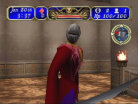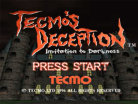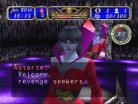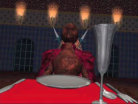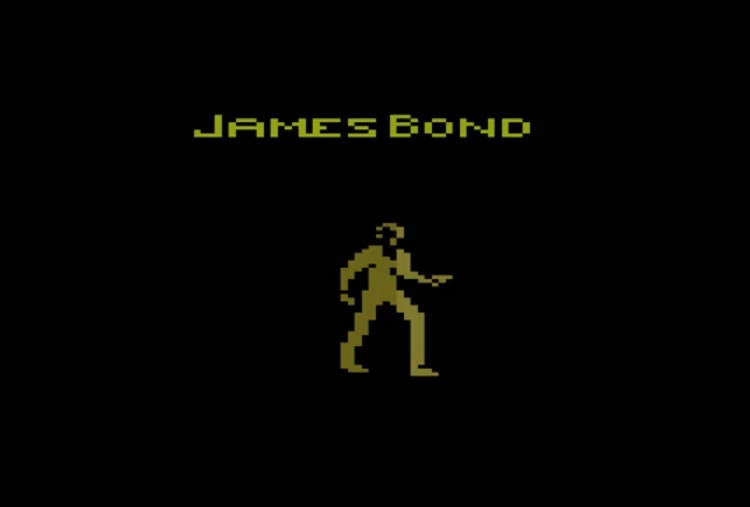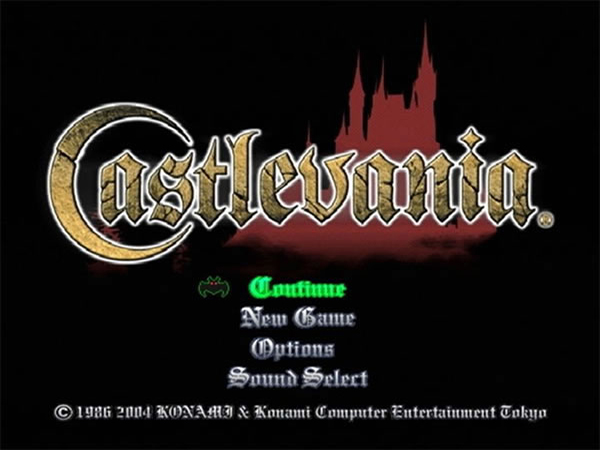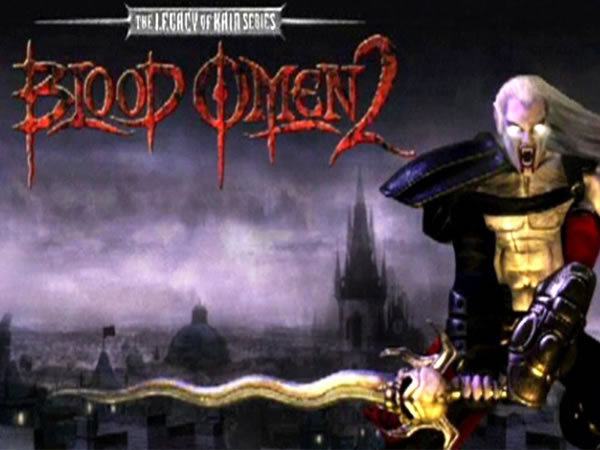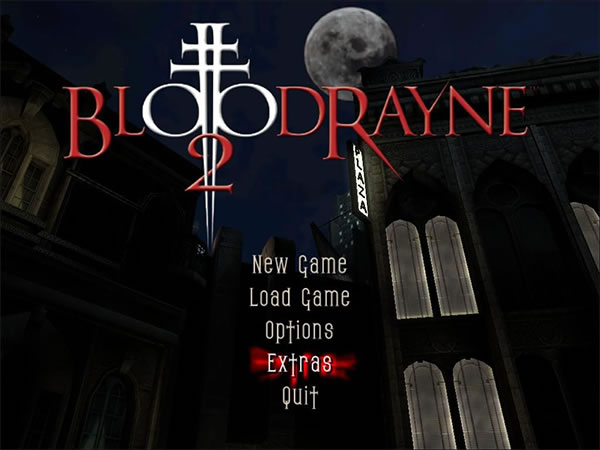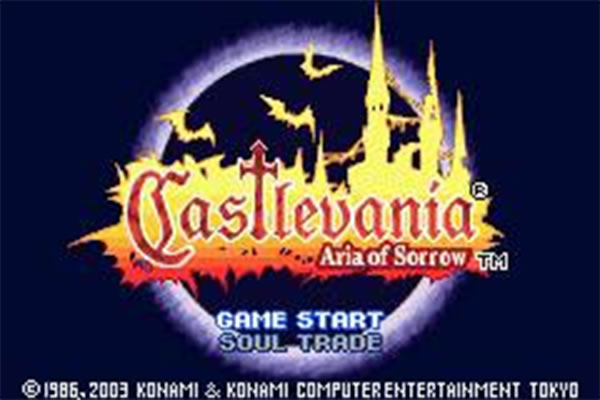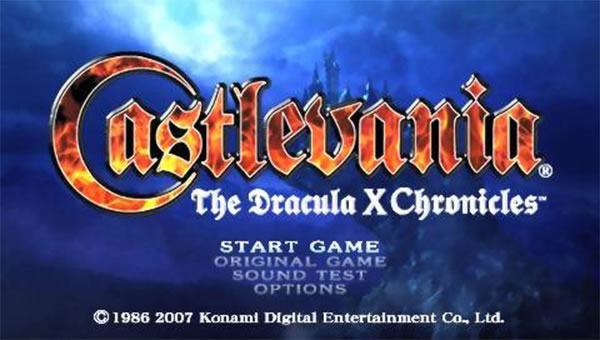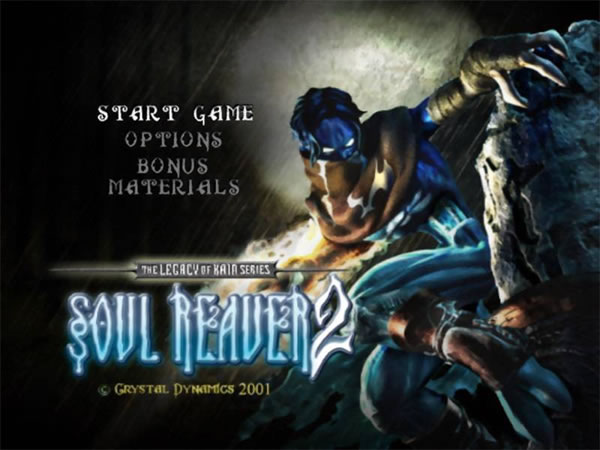- CLASSIC MAGAZINES
- REVIEW CREW
A show recapping what critics thought back
when classic games first came out! - NEXT GENERATION'S BEST & WORST
From the worst 1-star reviews to the best
5-stars can offer, this is Next Generation! - NINTENDO POWER (ARCHIVE)
Experience a variety of shows looking at the
often baffling history of Nintendo Power! - MAGAZINE RETROSPECTIVE
We're looking at the absolutely true history of
some of the most iconic game magazines ever! - SUPER PLAY'S TOP 600
The longest and most ambitious Super NES
countdown on the internet! - THEY SAID WHAT?
Debunking predictions and gossip found
in classic video game magazines! - NEXT GENERATION UNCOVERED
Cyril is back in this spin-off series, featuring the
cover critic review the art of Next Generation! - HARDCORE GAMER MAGAZING (PDF ISSUES)
Download all 36 issues of Hardcore Gamer
Magazine and relive the fun in PDF form!
- REVIEW CREW
- ELECTRONIC GAMING MONTHLY
- ELECTRONIC GAMING MONTHLY RANKS
From Mario to Sonic to Street Fighter, EGM
ranks classic game franchises and consoles! - ELECTRONIC GAMING MONTHLY BEST & WORST
Counting down EGM’s best and worst reviews
going year by year, from 1989 – 2009! - ELECTRONIC GAMING BEST & WORST AWARDS
11-part video series chronicling the ups and
downs of EGM’s Best & Worst Awards!
- ELECTRONIC GAMING MONTHLY RANKS
- GAME HISTORY
- GAME OVER: STORY BREAKDOWNS
Long-running series breaking down game
stories and analyzing their endings! - A BRIEF HISTORY OF GAMING w/ [NAME HERE]
Real history presented in a fun and pithy
format from a variety of game historians! - THE BLACK SHEEP
A series looking back at the black sheep
entries in popular game franchises! - INSTANT EXPERT
Everything you could possibly want to know
about a wide variety of gaming topics! - FREEZE FRAME
When something familiar happens in the games
industry, we're there to take a picture! - I'VE GOT YOUR NUMBER
Learn real video game history through a series
of number-themed episodes, starting at zero! - GREAT MOMENTS IN BAD ACTING
A joyous celebration of some of gaming's
absolute worst voice acting!
- GAME OVER: STORY BREAKDOWNS
- POPULAR SHOWS
- DG NEWS w/ LORNE RISELEY
Newsman Lorne Riseley hosts a regular
series looking at the hottest gaming news! - REVIEW REWIND
Cyril replays a game he reviewed 10+ years
ago to see if he got it right or wrong! - ON-RUNNING FEUDS
Defunct Games' longest-running show, with
editorials, observations and other fun oddities! - DEFUNCT GAMES QUIZ (ARCHIVE)
From online quizzes to game shows, we're
putting your video game knowledge to the test!- QUIZ: ONLINE PASS
Take a weekly quiz to see how well you know
the news and current gaming events! - QUIZ: KNOW THE GAME
One-on-one quiz show where contestants
find out if they actually know classic games! - QUIZ: THE LEADERBOARD
Can you guess the game based on the classic
review? Find out with The Leaderboard!
- QUIZ: ONLINE PASS
- DEFUNCT GAMES VS.
Cyril and the Defunct Games staff isn't afraid
to choose their favorite games and more! - CYRIL READS WORLDS OF POWER
Defunct Games recreates classic game
novelizations through the audio book format!
- DG NEWS w/ LORNE RISELEY
- COMEDY
- GAME EXPECTANCY
How long will your favorite hero live? We crunch
the numbers in this series about dying! - VIDEO GAME ADVICE
Famous game characters answer real personal
advice questions with a humorous slant! - FAKE GAMES: GUERILLA SCRAPBOOK
A long-running series about fake games and
the people who love them (covers included)! - WORST GAME EVER
A contest that attempts to create the worst
video game ever made, complete with covers! - LEVEL 1 STORIES
Literature based on the first stages of some
of your favorite classic video games! - THE COVER CRITIC
One of Defunct Games' earliest shows, Cover
Critic digs up some of the worst box art ever! - COMMERCIAL BREAK
Take a trip through some of the best and
worst video game advertisements of all time! - COMIC BOOK MODS
You've never seen comics like this before.
A curious mix of rewritten video game comics!
- GAME EXPECTANCY
- SERIES ARCHIVE
- NINTENDO SWITCH ONLINE ARCHIVE
A regularly-updated list of every Nintendo
Switch Online release, plus links to review! - PLAYSTATION PLUS CLASSIC ARCHIVE
A comprehensive list of every PlayStation
Plus classic release, including links! - RETRO-BIT PUBLISHING ARCHIVE
A regularly-updated list of every Retro-Bit
game released! - REVIEW MARATHONS w/ ADAM WALLACE
Join critic Adam Wallace as he takes us on a
classic review marathon with different themes!- DEFUNCT GAMES GOLF CLUB
Adam Wallace takes to the links to slice his way
through 72 classic golf game reviews! - 007 IN PIXELS
Adam Wallace takes on the world's greatest spy
as he reviews 15 weeks of James Bond games! - A SALUTE TO VAMPIRES
Adam Wallace is sinking his teeth into a series
covering Castlevania, BloodRayne and more! - CAPCOM'S CURSE
Adam Wallace is celebrating 13 days of Halloween
with a line-up of Capcom's scariest games! - THE FALL OF SUPERMAN
Adam Wallace is a man of steel for playing
some of the absolute worst Superman games! - THE 31 GAMES OF HALLOWEEN
Adam Wallace spends every day of October afraid
as he reviews some of the scariest games ever! - 12 WEEKS OF STAR TREK
Adam Wallace boldly goes where no critic has
gone before in this Star Trek marathon!
- DEFUNCT GAMES GOLF CLUB
- DAYS OF CHRISTMAS (ARCHIVE)
Annual holiday series with themed-episodes
that date all the way back to 2001!- 2015: 30 Ridiculous Retro Rumors
- 2014: 29 Magazines of Christmas
- 2013: 29 Questionable Power-Ups of Christmas
- 2012: 34 Theme Songs of Christmas
- 2011: 32 Game Endings of Christmas
- 2010: 31 Bonus Levels of Christmas
- 2009: 30 Genres of Christmas
- 2008: 29 Controls of Christmas
- 2007: 34 Cliches of Christmas
- 2006: 33 Consoles of Christmas
- 2005: 32 Articles of Christmas
- 2004: 31 Websites of Christmas
- 2003: 29 Issues of Christmas
- 2002: 28 Years of Christmas
- 2001: 33 Days of Christmas
- NINTENDO SWITCH ONLINE ARCHIVE
- REVIEW ARCHIVE
- FULL ARCHIVE
Tecmo's Deception: Invitation to Darkness
Okay, what's the first thing you think of when you hear the name of the company Tecmo? Most likely thoughts went straight toward insanely difficult ninja action or fighting games starring breasts that defy all laws of physics. However, Tecmo had other games and series besides Ninja Gaiden and Dead or Alive. One of their more niche series is the Deception games, a strategy series that provided better torture porn than the games based on the Saw movies. In fact, by the fourth game on Playstation 4, players could become total sadists with their set-ups. By those standards, the original game seems quaint but is still a good way for players to see how sick their minds can get.
Tecmo's Deception: Invitation to Darkness has a bare-bones plot, but that's generally excusable for a strategy game. The premise is that you play the son of the king, next in line for the throne. He gets framed by his jealous brother for the king's murder and sentenced to burn at the stake. He pleads to the powers that be to get him out of the predicament, and he gets saved, not by God, but by Satan's messenger Astarte. She promises him his revenge in exchange for stealing souls to revive Satan. The plot only comes up in the first and last chapters. The chapters in-between are just random-feeling encounters. The plots in the later games of the series are much stronger, but the thin story doesn't really hurt this one.
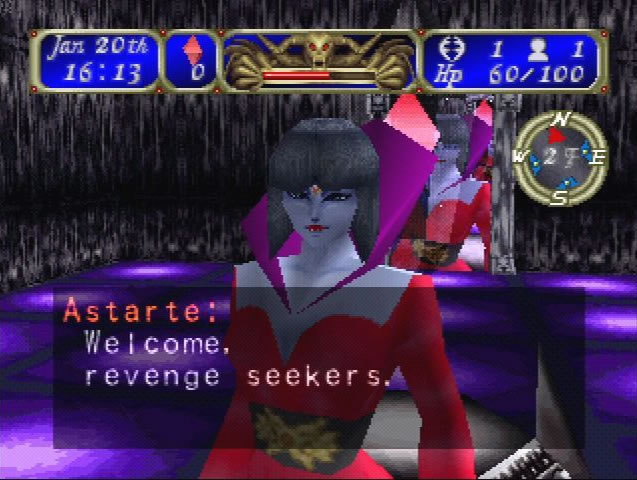 Click For the Full Picture Archive
Click For the Full Picture Archive
Despite the game being first-person, gameplay does not revolve around shooting or stabbing. Instead, as lord of Satan's abode, players set traps to capture or kill anyone foolish enough to wander in. Stealing victims' souls grants MP for developing and setting traps while killing them grants gold for buying items and building onto the mansion. Strategic thinking is critical here. Unlike in the later games where new traps can be set on the fly, here the traps can only be set at the beginning of a scenario or from Satan's main chamber. On top of that, the traps feel more mechanical, depending on invisible die rolls to determine if the targets dodge or not. The sequels feel more natural... at least, as natural as iron balls falling from the ceiling can be.
The game maintains a chilling atmosphere with decent visuals for the time. The sequels have more detail in their environments, but the fact that the mansion here can be custom-built excuses that to a degree. The atmosphere also works thanks to great sound design and a soundtrack that just feels tense. The victims' cries when they get nailed are cheesy enough to break the immersion, though. The controls do the job but fall victim to the traps of pre-Dual Shock PS1 games. Strafing to dodge attacks depends on the shoulder buttons which are stiffer than a thumbstick. You can only activate whichever trap is directly in your line of sight at any given time which can be problematic if your quarry isn't approaching at just the right angle. Finally, your victims can only be nailed by one trap at a time, a far cry from the sadistic Rube Goldberg death sequences that can be set up in the later games.
Even though the sequels improve on the gameplay greatly, the original Tecmo's Deception is still worth playing. Though some elements had not aged well, the hunt is still as compelling now as it was twenty years ago. Check it out this Halloween and show Jigsaw a thing or two.
Tecmo's Deception: Invitation to Darkness has a bare-bones plot, but that's generally excusable for a strategy game. The premise is that you play the son of the king, next in line for the throne. He gets framed by his jealous brother for the king's murder and sentenced to burn at the stake. He pleads to the powers that be to get him out of the predicament, and he gets saved, not by God, but by Satan's messenger Astarte. She promises him his revenge in exchange for stealing souls to revive Satan. The plot only comes up in the first and last chapters. The chapters in-between are just random-feeling encounters. The plots in the later games of the series are much stronger, but the thin story doesn't really hurt this one.
 Click For the Full Picture Archive
Click For the Full Picture ArchiveDespite the game being first-person, gameplay does not revolve around shooting or stabbing. Instead, as lord of Satan's abode, players set traps to capture or kill anyone foolish enough to wander in. Stealing victims' souls grants MP for developing and setting traps while killing them grants gold for buying items and building onto the mansion. Strategic thinking is critical here. Unlike in the later games where new traps can be set on the fly, here the traps can only be set at the beginning of a scenario or from Satan's main chamber. On top of that, the traps feel more mechanical, depending on invisible die rolls to determine if the targets dodge or not. The sequels feel more natural... at least, as natural as iron balls falling from the ceiling can be.
The game maintains a chilling atmosphere with decent visuals for the time. The sequels have more detail in their environments, but the fact that the mansion here can be custom-built excuses that to a degree. The atmosphere also works thanks to great sound design and a soundtrack that just feels tense. The victims' cries when they get nailed are cheesy enough to break the immersion, though. The controls do the job but fall victim to the traps of pre-Dual Shock PS1 games. Strafing to dodge attacks depends on the shoulder buttons which are stiffer than a thumbstick. You can only activate whichever trap is directly in your line of sight at any given time which can be problematic if your quarry isn't approaching at just the right angle. Finally, your victims can only be nailed by one trap at a time, a far cry from the sadistic Rube Goldberg death sequences that can be set up in the later games.
Even though the sequels improve on the gameplay greatly, the original Tecmo's Deception is still worth playing. Though some elements had not aged well, the hunt is still as compelling now as it was twenty years ago. Check it out this Halloween and show Jigsaw a thing or two.
HOME |
CONTACT |
NOW HIRING |
WHAT IS DEFUNCT GAMES? |
NINTENDO SWITCH ONLINE |
RETRO-BIT PUBLISHING
Retro-Bit |
Switch Planet |
The Halcyon Show |
Same Name, Different Game |
Dragnix |
Press the Buttons
Game Zone Online | Hardcore Gamer | The Dreamcast Junkyard | Video Game Blogger
Dr Strife | Games For Lunch | Mondo Cool Cast | Boxed Pixels | Sega CD Universe | Gaming Trend
Game Zone Online | Hardcore Gamer | The Dreamcast Junkyard | Video Game Blogger
Dr Strife | Games For Lunch | Mondo Cool Cast | Boxed Pixels | Sega CD Universe | Gaming Trend
Copyright © 2001-2025 Defunct Games
All rights reserved. All trademarks are properties of their respective owners.
All rights reserved. All trademarks are properties of their respective owners.






